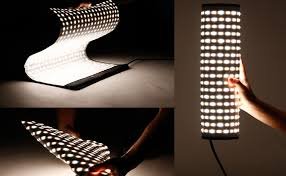Introduction
flexible led display panels are at the forefront of display technology innovation, offering unparalleled versatility and creativity in various applications. Unlike traditional rigid panels, flexible LED display panels can bend, curve, and adapt to different shapes and surfaces, making them ideal for a wide range of uses from advertising to architecture. This guide explores the technology behind flexible LED display panels, their applications, and current market trends.
What are Flexible LED Display Panels?
Flexible LED display panels are modular units composed of light-emitting diodes (LEDs) mounted on a flexible substrate. This design allows the panels to be curved or bent, providing new possibilities for creative and functional display solutions.
Key Features:
- Flexibility: Can be shaped to fit curved or irregular surfaces, allowing for innovative display designs.
- High Resolution: Offers sharp, detailed visuals suitable for various applications.
- Durability: Built to withstand physical stress and environmental conditions, maintaining performance over time.
- Versatility: Suitable for both indoor and outdoor environments, with a wide range of applications.
Technology Behind Flexible LED Display Panels
The technology used in flexible LED display panels involves several advanced components:
- Flexible Substrates:
- Materials: Utilizes substrates such as flexible plastics or metal foils that can bend and conform to different shapes.
- Advantages: Provides lightweight and durable panels that can be easily installed in unconventional spaces.
- LED Technology:
- High-Brightness LEDs: Uses high-brightness LEDs for vibrant and clear visuals.
- Pixel Density: High pixel density ensures detailed and crisp images even on curved surfaces.
- Flexible Circuitry:
- Printed Circuit Boards (PCBs): Incorporates flexible PCBs that allow the display to bend and fold without damaging the electronics.
- Integration: Ensures that the electronic components work effectively despite the panel’s flexibility.
- Protective Coatings:
- Environmental Protection: Applies coatings to protect the display from environmental factors and physical damage.
- Transparency: Maintains high transparency for applications requiring see-through displays.
Applications of Flexible LED Display Panels
Flexible LED display panels offer a wide range of applications across different industries:
- Advertising and Retail:
- Custom Shapes: Allows for creative and eye-catching displays that conform to store layouts and window designs.
- Dynamic Signage: Supports dynamic and interactive advertising solutions.
- Architecture and Design:
- Building Facades: Integrates with building exteriors to create unique and customizable architectural displays.
- Interior Design: Adapts to curved walls and unconventional spaces in interior design projects.
- Entertainment and Events:
- Stage Design: Provides flexible backdrops and displays for concerts, theater productions, and events.
- Art Installations: Enables artistic displays with dynamic and flexible configurations.
- Automotive:
- Dashboard Displays: Used in car dashboards and interiors to provide flexible, high-resolution displays.
- Exterior Lighting: Offers innovative lighting solutions for vehicle exteriors.
- Wearable Technology:
- Smart Clothing: Embeds in textiles to create interactive and flexible wearable displays.
- Accessories: Used in flexible gadgets and accessories like smartwatches and fitness trackers.
Key Trends in the Flexible LED Display Panel Market
Several trends are influencing the flexible LED display panel market:
- Technological Advancements:
- Enhanced Flexibility: Continuous improvements in materials and manufacturing processes are increasing the flexibility and performance of LED panels.
- Higher Resolution: Advances in pixel density and resolution are providing sharper, more detailed visuals.
- Cost Reduction:
- Economies of Scale: As production volumes increase and technology advances, costs for flexible LED panels are decreasing.
- Affordable Solutions: Development of more cost-effective panels for a wider range of applications.
- Increased Adoption:
- Diverse Applications: Growing use in various sectors including advertising, architecture, automotive, and wearable technology.
- Customization: Rising demand for customized and innovative display solutions.
- Sustainability:
- Eco-Friendly Materials: Use of sustainable and recyclable materials in the production of flexible LED panels.
- Energy Efficiency: Focus on developing energy-efficient panels that reduce power consumption.
- Integration with Smart Technologies:
- IoT and Connectivity: Integration with smart technologies and connectivity features for enhanced functionality.
- Interactive Capabilities: Development of panels with interactive features and advanced user interfaces.
Conclusion
Flexible LED display panels represent a significant advancement in display technology, offering unprecedented versatility and innovation. Understanding the technology, applications, and market trends of flexible LED display panels can help businesses and consumers make informed decisions about incorporating these advanced displays into their projects. With ongoing technological advancements and expanding applications, flexible LED display panels are set to revolutionize the way we interact with and experience visual content.













